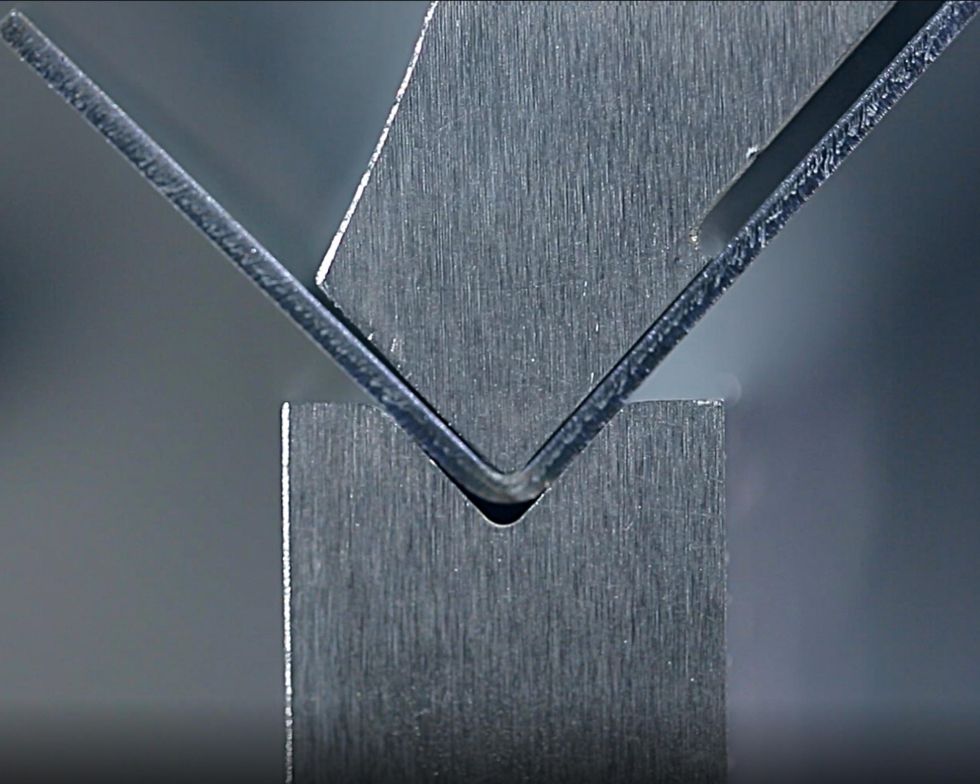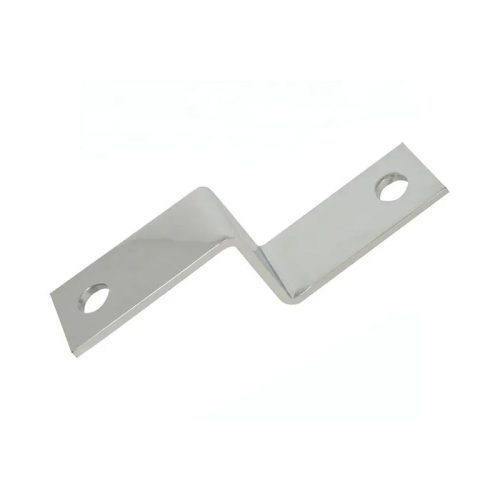Fabricante de soluções personalizadas de hardware de precisão
Achieving a perfect 90-degree bend in fabrico de chapas metálicas de precisão is a fundamental skill in metal fabrication, essential for creating durable and functional components. Whether you’re working on precision sheet metal fabrication manufacturer for aerospace, automotive, or industrial applications, mastering the bending process ensures structural integrity and accuracy. However, improper techniques can lead to cracks, warping, or inaccurate angles, compromising the final product.
In this guide, we’ll cover the essential methods, tools, and techniques for achieving clean, precise bends while minimizing material stress. Whether you’re using a brake press, V-die, or manual bending techniques, understanding the right approach will help you optimize your fabrication process. Let’s dive in!
related post: 2025 Top 20 Precision Sheet Metal Fabrication Companies
Contents
Bending a 90-degree angle is a fundamental sheet metal fabrication process, alongside corte a laser and joining techniques. The bending process involves clamping the sheet metal in place and applying force strategically to specific areas. This force must exceed the material’s yield strength to achieve permanent deformation.
The result? A precise V-shaped, U-shaped, or channel bend, creating a new part geometry without changing the overall volume of the workpiece.
For manual bending, it’s best suited for 20 to 22 gauge stainless steel sheets (approximately 0.8-0.9mm thick). If you don’t have access to a hydraulic press brake or CNC bending machine, this method is ideal for small projects or DIY applications.
However, if you need higher precision, faster production speed, or thicker sheet metal processing, using professional bending machines would be a better option.
In this guide, we’ll walk you through a step-by-step bending process, complete with a tool list and expert tips, ensuring that even beginners can follow along.
If you’re working on a project and need small-batch processing or custom bending solutions, feel free to reach out to us—we’re happy to assist, even if we haven’t started working together yet.
At our company’s foundation, our mission was not just about profits but about creating value and opportunities for more businesses.
If you’re looking for high-quality sheet metal bending solutions, let’s connect!

Measure the exact location where the bend will be made using a steel ruler or tape measure.
Mark the bend line on the metal surface using a marker or scribe. Ensure the line is clear and precise.
Optional: Add guide lines – Draw two parallel lines 1-2mm on each side of the bend line to assist with alignment.
💡 Tips:
✅ A scribe provides more precise marking than a marker, especially on smooth stainless steel surfaces.
✅ For thicker metal sheets (≥1.5mm), lightly score the bend line using a saw blade or scribing knife. This helps reduce deformation.
✅ Use a non-permanent marker to avoid leaving stains on the final product.
Position the sheet metal in a workbench vise or bending clamp. Ensure the bend line aligns with the clamp’s edge.
Leave enough material exposed outside the clamp for bending while keeping it stable.
💡 Tips:
✅ Place rubber padding or cloth in the vise to prevent slipping or damaging the metal surface.
✅ Make sure the sheet is firmly secured to avoid movement, which could lead to an inaccurate bend.
Method 1: Hand Bending
Grip the exposed metal part with both hands and apply steady, even force upwards.
Slowly bend the sheet to prevent uneven deformation.
Method 2: Using a Wooden Mallet or Rubber Hammer
When the bend angle reaches 30-45 degrees, use a wooden mallet or rubber hammer to tap along the bend line.
Work from both ends toward the center to maintain uniform bending.
💡 Tips:
✅ Bend gradually—applying too much force at once may cause cracks or uneven shapes.
✅ For thicker sheets, use a steel pipe as a lever to make bending easier.
✅ If using a rubber hammer, tap evenly along the bend line to maintain consistency.
Use an L-square to check if the angle has reached 90 degrees.
If the angle is less than 90 degrees, apply more force or tap with a mallet to increase the bend.
If the angle is greater than 90 degrees, gently tap the outer edge with a rubber hammer to reduce the bend.
💡 Tips:
✅ If working on multiple pieces, always test one first to perfect the method before batch processing.
Smooth the edges using sandpaper or a metal file to remove sharp burrs.
Reinforce the bend by clamping it for a few hours, allowing the metal to adapt to its new shape.
Improve surface finish by polishing or applying protective coatings.
💡 Tips:
✅ For aluminum sheets, heating the bend area to 100-150°C (using a heat gun or oven) reduces cracking risk.
✅ For thicker metal, consider V-groove pre-cutting (cutting a shallow V-groove along the bend line) to make bending easier and more precise.
Manual bending is a practical method for small projects, DIY tasks, and thin sheet metal applications. However, for higher precision, mass production, or bending thick metal, professional press brakes or CNC machines are recommended.
Need custom bending solutions or small-batch processing? Contact us—we’re happy to assist, even if we haven’t started working together yet!

Light DIY Projects – Ideal for creating wall backdrops, shelves, or decorative items; suitable for individuals or small workshops working on metal crafts, repairs, or modifications.
Small-Batch Custom Production – Used for processing special metal parts like custom enclosures and brackets, particularly for thin sheets (20-gauge or thinner).
Prototyping – Designers and engineers can quickly create samples during product development without investing in expensive equipment.
Repairs & Adjustments – Useful for on-site repairs and modifications of damaged metal components.
✅ Cost-Effective & Easy to Use – Requires minimal investment in tools, eliminating the need for expensive bending machines or molds.
✅ Simple Setup – Beginner-friendly and accessible for hobbyists.
✅ Flexible Operation – Works with various materials, including aluminum, stainless steel, and cold-rolled steel, without requiring complex programming or CNC equipment.
✅ Ideal for Small-Batch or Custom Production – Perfect for one-off or small-scale customization without mold constraints.
✅ Useful for Hard-to-Reach Areas – Allows bending in locations where machinery may not fit, especially for large or complex structures.
❌ Not Suitable for Thick Metal Sheets – Not recommended for sheets thicker than 18-gauge due to high bending resistance.
❌ Requires Physical Effort & Precision – May lack the accuracy needed for professional applications and can be challenging to maintain uniform bends.
❌ Limited Precision – Angle control is less accurate compared to CNC bending machines, leading to potential variations.
❌ Time-Consuming & Labor-Intensive – Thicker or harder metals require significant effort and extended operation time.
❌ Risk of Material Damage – Improper bending techniques may cause surface scratches, deformation, or even cracking.